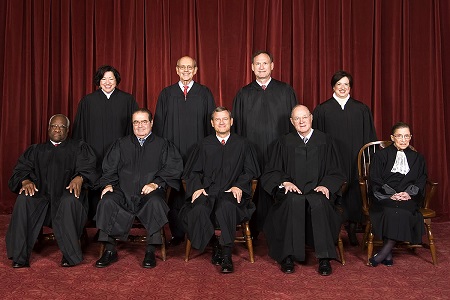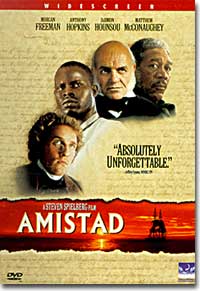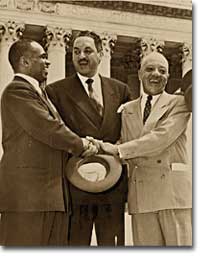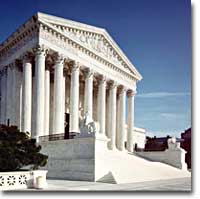9c. The Supreme Court: What Does It Do?

Chief Justice John Roberts and the eight associate justices have been appointed to the Supreme Court for life. They will remain on the Court until they retire, resign, are impeached, or die.
The justices are somehow different from other well-known figures in government. They dress in long black robes. They almost never appear on magazine covers, and they seem to stay on the court forever. They announce their decisions periodically, then disappear into their "Marble Palace."
In anger, President Franklin Roosevelt once called them "nine old men." What connections do they have to real-world government and politics, and what work do they do? The power of the Court is reflected in the work it does, and its decisions often shape policy as profoundly as any law passed by Congress or any action taken by the president.
The Power of Choice

The Supreme Court chose to hear the case United States v. the Claimants of the Amistad (1841) because of its implications to the United States's foreign relations. The case was documented in Steven Spielberg's 1997 movie, Amistad.
The Court receives about 7,000 petitions every year. It has almost complete control over which cases it will hear. The justices choose about 90 percent of their 100 to 120 cases by writ of certiorari, an order to send up a case record from a lower court.
Typically, the justices discuss any cases one of them has recommended from earlier readings. The Rule of Four governs their choices: if four justices vote to hear a case, all nine agree to it.
How do they choose their cases? Generally, the Court considers only cases that have far-reaching implications beyond the two parties involved in the dispute. For example, a case in which a student sues an assistant principal for searching a locker may shape the privacy rights of all students in public schools. The court also tends to hear cases in which two lower courts have reached conflicting decisions. And it tends to look closely at lower court decisions that contradict earlier Supreme Court decisions.
Hearing and Deciding a Case

NAACP lawyers congratulate each other on the decision in Brown v. Board of Education of Topeka (1954). Attorney Thurgood Marshall, center, was later named the first African American justice of the Supreme Court.
Hearings begin in October every year, and the last cases are usually heard in June. The justices receive briefs, or summaries of arguments, from the lawyers ahead of time. Often they receive amici curiae, or briefs prepared by interest groups or government agencies that support one side or the other. The hearings are open to the public and are strictly timed. Each side has 30 minutes to present its case, and the justices typically ask questions and even debate one another during the allotted time.
After the public hearing the justices meet together privately to discuss the case. They share their opinions, debate the issues, and eventually come to a conclusion. Each justice takes a side individually, and because there are nine justices (an uneven number), one side always wins.
Announcing and Implementing a Decision
When the Court announces a decision, the individual justice's opinions are revealed. A unanimous decision (9-0) indicates that the justices were in total agreement. This vote is rare because the cases that have been chosen are the tough ones. Decisions are usually split 6-3, 7-2, or 5-4.
Along with the decisions, the justices release explanations for each side. A majority opinion is prepared (usually by the senior justice on that side), and the justices whose point of view did not prevail release a dissenting opinion. A justice who agrees with the majority decision but reaches the same conclusion for different reasons sometimes presents a concurring opinion.

The Supreme Court comprises one chief justice, and a number of associate justices that is determined by Congress. Today, there are a total of nine justices.
The power of the Court to implement its decisions is limited. For example, in the famous 1954 case Brown v. Board of Education of Topeka, the justices ruled that racial segregation (separate but equal) in public places is unconstitutional. But, it took many years for school districts to desegregate.
The Court has no means (such as an army) to force implementation. Instead, it must count on the executive and legislative branches to back its decisions. In the Civil Rights Movement, the Court led the way, but the other branches had to follow before real change could take place.
Despite the Supreme Court's limitations in implementing decisions, the justices often set policies that lead to real social change. So even though justices don't do a great deal of their work in public, and most Americans don't have a good sense of what they do, their decisions are very important. The Supreme Court has real power in the American political system.







